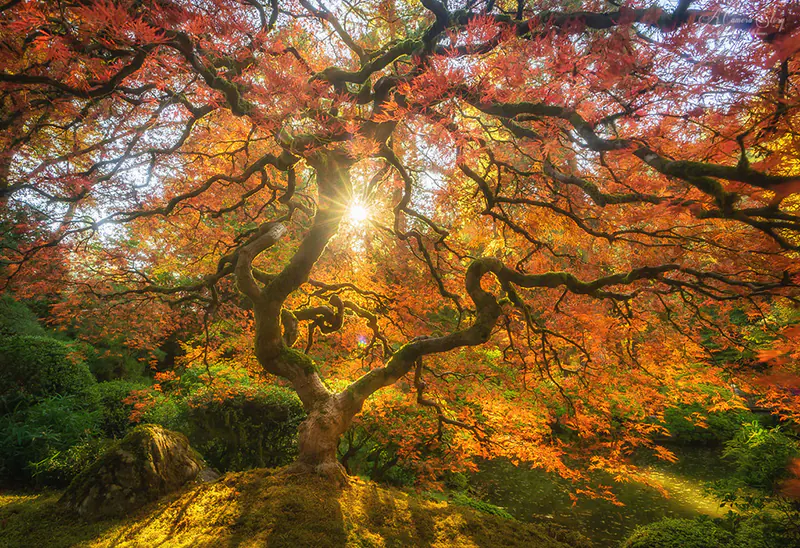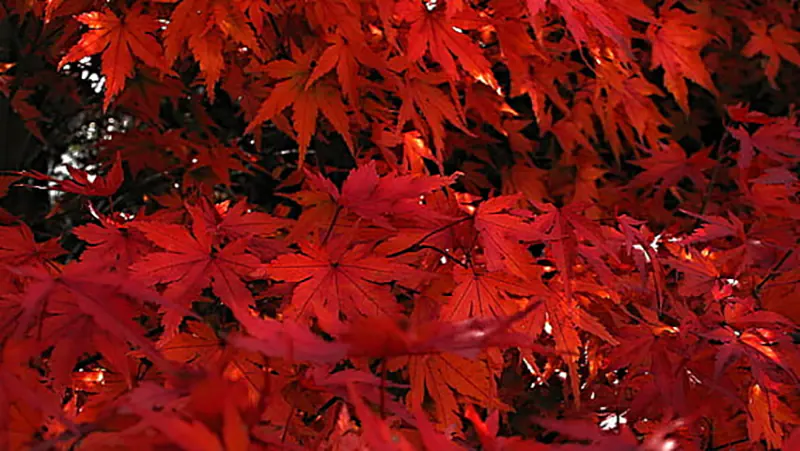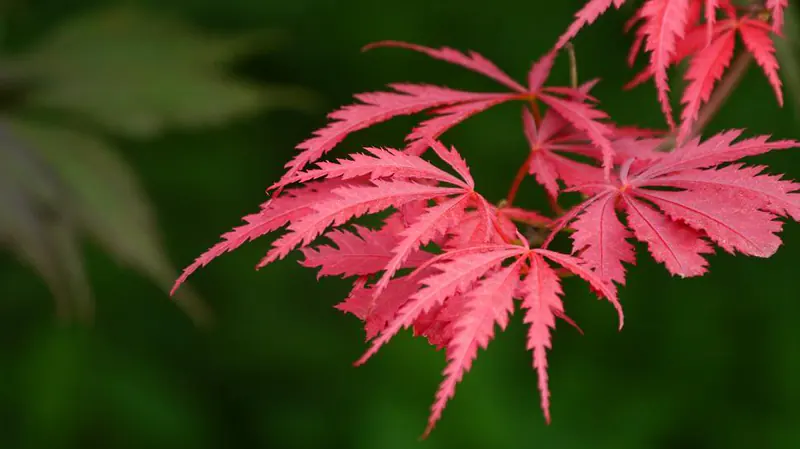Red Dragon Japanese Maple
A tree named for the coloring of its foliage, the red dragon Japanese maple is a wonderful tree to start growing at home. Whether you’ve grown many bonsai trees or if this is your first, we’re here to show you everything you need to begin growing this tree.
From soil and fertilizer to repotting and pruning seasons, we’ll walk you through all the details about this bonsai and how to ensure it’s cared for properly. Through this guide, you’ll learn how to grow your red dragon maple and let it thrive.
Image courtesy of Sathish J
Here’s what you’ll find while reading through our Red Dragon Japanese Maple bonsai species guide:
Here’s what you’ll find while reading through our Red Dragon Japanese Maple bonsai species guide:
01
02
03
04
05
Quick Red Dragon Japanese Maple Bonsai Care Sheet
For a quick and simple overview of this care guide, the table below briefly explains all the needs of your red dragon Japanese maple bonsai tree. While brief, the information is a great reference if you’re an experienced bonsai grower or have already read the detailed section of this article.
Recommended soil | A well-draining soil mixture. |
Watering | Once a day. Check occasionally as this tree is known to need more frequent watering. |
Potting season | Every second year, during the growing season. |
Shaping and pruning season | Prune only every second year, and lightly. Do this during the autumn months if pruning large branches. |
Light | Plenty of sunlight each day. Avoid direct afternoon sun where possible. |
Fertilizing | Use a solid organic fertilizer. Occasionally mix in a liquid fertilizer for stronger effects. Must be low in nitrogen content. |
Propagation methods | Seeds, cuttings, air layering. |
Pests and diseases | Aphids and infections such as verticillium wilt. |
How to Care for a Red Dragon Japanese Maple Bonsai
The red dragon Japanese maple is an easy tree to care for, and through this section, we’ll show you all the details you need to know to nurture this bonsai properly.
Best Soil
There are two options you can pick when selecting a suitable soil for the red dragon bonsai. A regular well-draining mixture will work well and keep the tree healthy as it grows. This soil option will lessen the chances of any overwatering damage. This soil is easy to get at your local garden or bonsai shop.
The second choice is an akadama mix with added pumice and lava rocks. While a less readily available soil, this mixture will retain more moisture and nutrients for your bonsai.
Watering
The red dragon Japanese maple requires water at least once every day and can at times require more. You’ll need to determine this frequency yourself, as it changes based on the amount of sunlight, temperature, soil, and other factors.
For the best result, use the soil touch method. Deeply plunge your finger into the soil to check for any hint of moisture. Check in the morning and evening each day if you think you need a higher watering frequency. This method will help you avoid damaging the tree due to overwatering.
Repotting
You’ll need to remove the tree from its pot for maintenance every two years. During this maintenance, you’ll need to wash the pot thoroughly and prune the tree’s roots.
This frequent repotting ensures your tree grows strong without issues from a cramped, root-filled pot. Cleaning every two years helps keep infections and diseases away. You can check for any signs of damage by pruning the roots and trimming that root section off.
Shaping And Pruning
You can prune the smaller parts of the red dragon Japanese maple throughout most of the year. However, these should only be cut every two years, lessening the stress placed upon the tree and allowing them to grow back delicately with ease. For stronger branches, cut-paste should be applied after they are severed. Only trim off the large branches during autumn.
Location And Sunlight
Place your bonsai tree in a well-aired area that receives plenty of indirect sunlight per day. If possible, the tree should be in direct sun during the morning. The afternoon sun can cause damage and will affect the coloring of your foliage.
Fertilizer
A great choice when picking your fertilizer is any solid organic option that has a low nitrogen level. While this is your ideal choice, you can increase its strength by adding liquid fertilizer to your bonsai tree once a week.
Propagation Methods
All propagation methods are viable, including seeds, cuttings, and air layering. These methods should best be done during the autumn months, allowing the tree time to grow.
Pests And Diseases
Aphids are the most common annoying bugs you’ll encounter. Use a regular insecticide to take care of any infestation that occurs. Once your tree is free of pests, frequently mist it to deter the tiny sap-suckers from your red dragon Japanese maple.
A more devious occurrence is verticillium wilt, a lethal infection that can destroy your bonsai and spread to nearby plants. If you see this infection occur, where your leaves begin to wilt, you have only a few options to handle this incurable disease. Trim away any affected area, frequently mist and clean your bonsai, and ensure it has enough nutrients from fertilizers. With a little bit of luck and care, your bonsai can survive.
Considerations for Growing an Indoor Red Dragon Japanese Maple
Moving the red dragon Japanese maple indoors is a great idea as the leaves are a gorgeous sight to behold. The bonsai makes a fine addition to any room of the house, but you’ll need to pay attention to where you place it.
Placement
The best place to keep an indoor red dragon is by a sun-facing window. Morning sunlight is preferred as the summer afternoon sun may cause damage or turn your tree’s foliage green. If a window isn’t available, ensure the tree receives a few hours of sunlight each day if needed by moving the tree around.
Common Issues You’ll Encounter While Caring For a Red Dragon Japanese Maple Bonsai
Any bonsai will have a few commonly occurring issues as you grow it. For the red dragon Japanese maple, these are the leave’s colors and your pruning frequency.
Leaf Coloring
Known for its red-colored leaves, the red dragon Japanese maple is gorgeous. However, the coloring can fade to green if left in the wrong conditions. Excess heat or exposure to sunlight will cause the red dragon maple to begin turning green. Move the tree out of sunlight and into a cooler location if you see this begin to occur.
Over-Pruning
Pruning your bonsai more regularly than advised can place stress on the tree. This added stress will lessen its growth rate, causing your red dragon Japanese maple bonsai to stop growing, if not cause damage. Ensure you prune the tree only every second year and during the right seasons.
FAQs about Red Dragon Japanese Maple Bonsai
Here are three commonly asked questions that need answering after this care sheet. We explain how you turn a red Japanese maple into a bonsai, if you can grow the tree indoors and what to do during winter.
You can turn a regular Japanese red maple into a bonsai through cuttings, seeds, or air layering to propagate a new tree. You can grow and groom it into a bonsai from this smaller tree by trimming its roots and leaves, keeping the tree small.
The Japanese maple is an easy species to grow indoors. The red dragon maple will require a lot of sunlight each day, preferably from a sun-facing window. A well-aired environment and frequent watering are key aspects of growing this tree indoors.
During the winter, you’ll want to place the tree in a protected spot. When the weather gets too cold, it could cause damage to your tree. As long as you keep the bonsai at a temperature above freezing, it will survive through winter.







